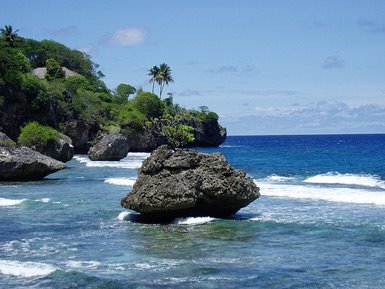British and Dutch navigators first included the island on their charts in the early seventeenth century, and Captain William Mynors of the British East India Company vessel, the Royal Mary, named the island when he arrived on Christmas Day, 25 December 1643.[citation needed] The island first appears on a map produced by Pieter Goos and published in 1666. Goos had labelled the island Moni.[citation needed]
The earliest recorded visit was in March 1688 by William Dampier of the British ship Cygnet, who found it uninhabited. An account of the visit can be found in Dampier's Voyages, which describes how, when trying to reach Cocos from New Holland, his ship was pulled off course in an easterly direction and after 28 days arrived at Christmas Island. Dampier landed at the Dales (on the West Coast) and two of his crewmen were the first recorded people to set foot on Christmas Island. The next visit was by Daniel Beekman, who described it in his 1718 book, A Voyage to and from the Island of Borneo, in the East Indies.In 1771, the Indian vessel, the Pigot, attempted to find an anchorage but was unsuccessful. The crew reported seeing wild pigs and coconut palms, however, pigs are not known to have been introduced to the island at the time. Thus, it is thought that the Pigot may have found a different island.
SOURCE


